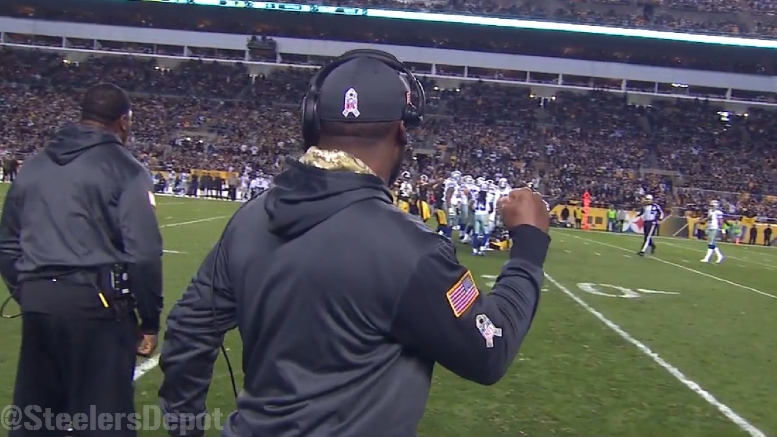The draft is hard. For those on the inside, the people in the actual war rooms, and especially for those on the outside. That’s us. It’s an unpredictable beats, made all the more tougher by two important factors we know little about: medical and interviews.
So we’re going to miss, we’re going to be incorrect. I am going to miss, I am going to be incorrect (see Billings, Andrew). Our efforts are only going to be so good but throughout the draft process, we’ve been trying to find out the best predictive measure for the Pittsburgh Steelers’ draft picks, especially in the first round.
The good thing is the front office stability allows us to find patterns and trends. It’s rare for a team to have the same head coach and GM for ten straight years like Mike Tomlin and Kevin Colbert. So we can use draft history to try and see what’s important and what isn’t.
We’ve talked about the link between pre-draft visitors and draft picks. There’s no smokescreen here and if you’ve followed the site, you know they’re going to draft a couple of guys on their list. On average, 3.7 players per draft (33 since 2008).
So are there are any other pre-draft links? I believe I’ve come up with three. They can never be ironclad, of course, and there will almost always be exceptions. But I think I’ve found three additional things. I’ll try to keep it as simple and straight-forward as I can as we go through this because I get it, it can get a little messy sorting through the trash.
1. There is a strong correlation between a high draft pick and the position the team brings in most for a pre-draft visit.
2. There is a correlation between bringing in 5+ of a position and an early draft pick.
3. Specifically, there is a correlation between cornerback visits and draft picks.
* * * * *
1. There is a strong correlation between a high draft pick and the position the team brings in most for a pre-draft visit.
Using the data Steelers Depot has provided since its inception, 2008, I went through all the non-local known pre-draft visits (we used non-local lists throughout). For this, we wanted to see if the position they brought in was likely to be drafted. On paper, the answer seems obvious enough, but it still needs to be tested.
Here is the position brought in the most of the 30 visits and the highest round that position was drafted.
2016: 11 S (2nd round)
2015: 9 CB (2nd round)
2014: 8 LB (1st round)
2013: 8 LB (1st round)
2012: 7 LB (3rd round)
2011: 6 OL, 6 DL, 6 CB (1st, 2nd, 3rd round)
2010: 7 LB, 7 WR (2nd, 3rd round)
2009: 8 OL, 8 CB (2nd, 3rd round)
2008: 5 WR, 5 LB (2nd, 3rd round)
Of those nine drafts, the top position was drafted in the first round three times. Five times it happened in the second, and once it didn’t happen until the third. Never after that. So, and this really shouldn’t be a surprise, you can expect outside linebacker – a leading seven of them brought in this year – to be drafted within the top two rounds.
The causation? Pittsburgh uses their visits to strongly look at what they feel is their biggest team need. And then address it high in the draft.
* * * * *
2. There is a correlation between bringing in 5+ of a position and an early draft pick.
I picked five as an arbitrary but “clean” number as I try to do in some of these studies (rounding down in my “what they look for” look-ins). We know that the position they bring in the most is one they look at early but what about the rest they show strong, but not the highest, interested in? Is there still a connection?
2016: 11 S, 7 CB, 5 DL
2015: 9 CB, 7 LB, 5 TE, 5 WR
2014: 8 LB, 7 CB, 5 WR
2013: 8 LB, 6 CB
2012: 7 LB, 6 OL, 5 WRs
2011: 6 CB, 6 DL, 6 OL, 5 WRs
2010: 7 WR, 7 LB, 6 OL
2009: 8 CB, 8 OL, 6 DL
2008: 5 WR, 5 LB
And the rounds those 27 groups ended up being drafted, if they were at all.
1st – 8 (29.6%)
2nd – 7 (25.9%)
3rd – 6 (22.2%)
4th – 1 (3.7%)
5th – 3 (11.1%)
6th – 0
7th – 1 (3.7%)
Not drafted – 1 (3.7%)
So 21 of the 27 groups wound up being drafted within the first three rounds. The only 5+ group that wasn’t drafted? Wide receiver in 2011. They brought in Austin Pettis, Vincent Brown, Denarius Moore, Clyde Gates, and Greg Little and didn’t end up drafting anyone.
In 2016, the team brought in 11 safeties, nine corners, and five defensive linemen. A corner was drafted in the first, a safety in the second, and a defensive linemen in the third. In 2015, they brought in nine corners, seven linebackers, and five tight ends. They drafted a corner in the second (and fourth), a linebacker in the first, and they waited for a tight end until the 5th. Just some examples.
This year, the team had two positions brought in at least five times. Outside linebacker, seven of ’em, and wide receiver, five in all. Based on the data, you could expect a wide receiver to be drafted within the first three rounds.
* * * * *
3. Specifically, there is a correlation between cornerback visits and draft picks.
You or I could look at any position but I wanted to take an extra look at cornerback. Mainly, because it felt unusual for so few to be brought in, four officially, and at the time the thought hit me, there were only one or two names. So I dove on in. Does looking at so few corners mean they aren’t likely to take one? Or does it mean nothing at all?
I looked at the number of corners brought in each year with where one was drafted, if one was drafted at all.
2016: 7 CBs (1st round)
2015: 9 CBs (2nd/4th round)
2014: 7 CBs (5th round)
2013: 6 CBs (5th round)
2012: 3 CBs (7th round)
2011: 6 CBs (3rd/4th round)
2010: 4 CBs (5th round)
2009: 8 CBs (3rd/5th round)
2008: 4 CBs (Zero drafted)
When only three or four corners have been brought in, 33% of the time, there hasn’t been one drafted higher than the 5th round. Even when 5 or 6 have come in, bringing the total to five, only once has one been taken higher than the 5th (2011, when they double-dipped).
So bottom line, when they want to draft a corner, they generally go pretty hard at it during the pre-draft process.And when they’re light, they don’t usually pull the trigger early.
* * * * *
Again, of course these aren’t the say-all, end-all. But the history of looking at the Steelers’ draft tendencies is the best thing we have to go on, short of one of you being able to call up Tomlin or Colbert and getting them to spill the beans. But I’ve done my best to adhere to those “rules” in my mock draft and we’ll see how things end up.








